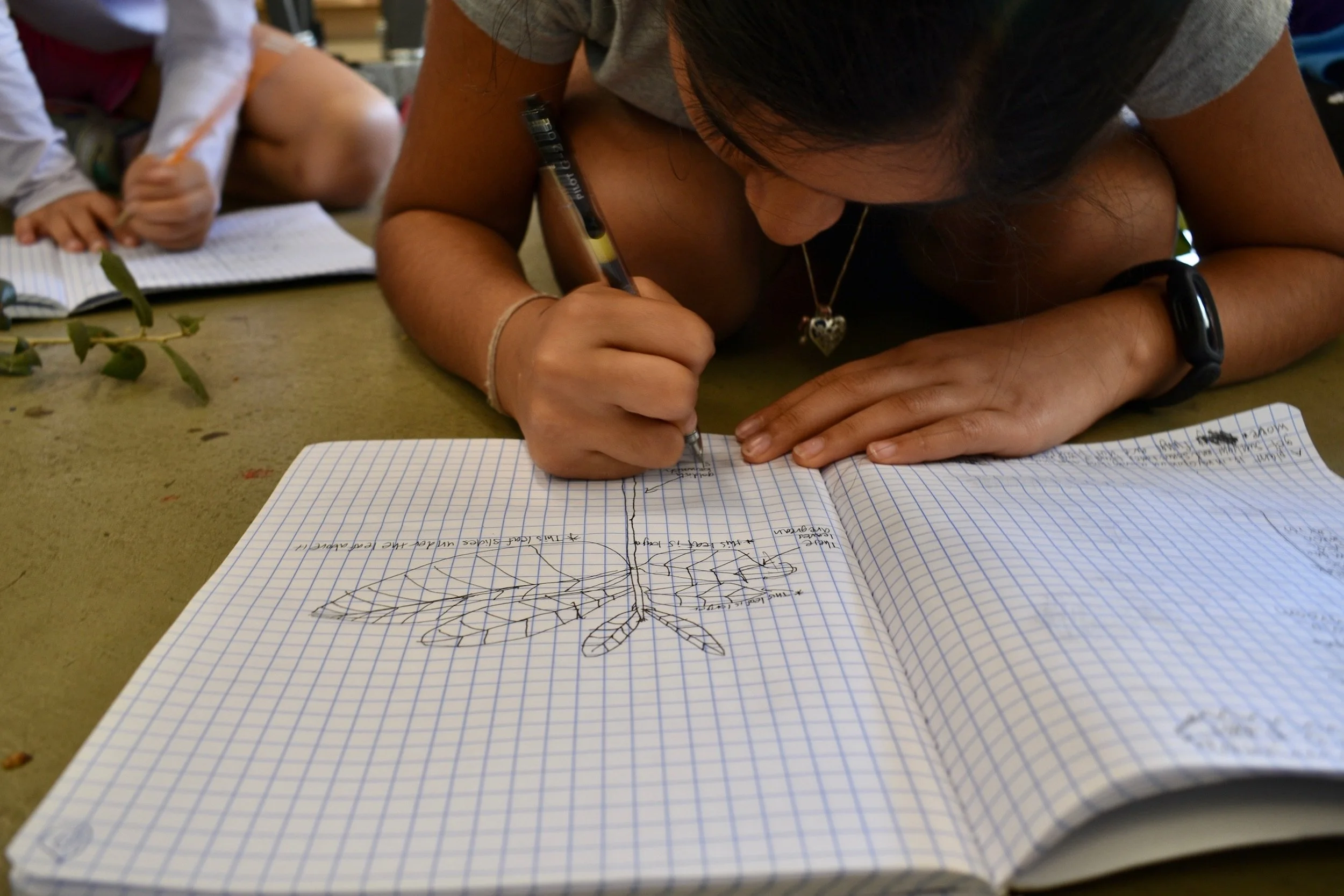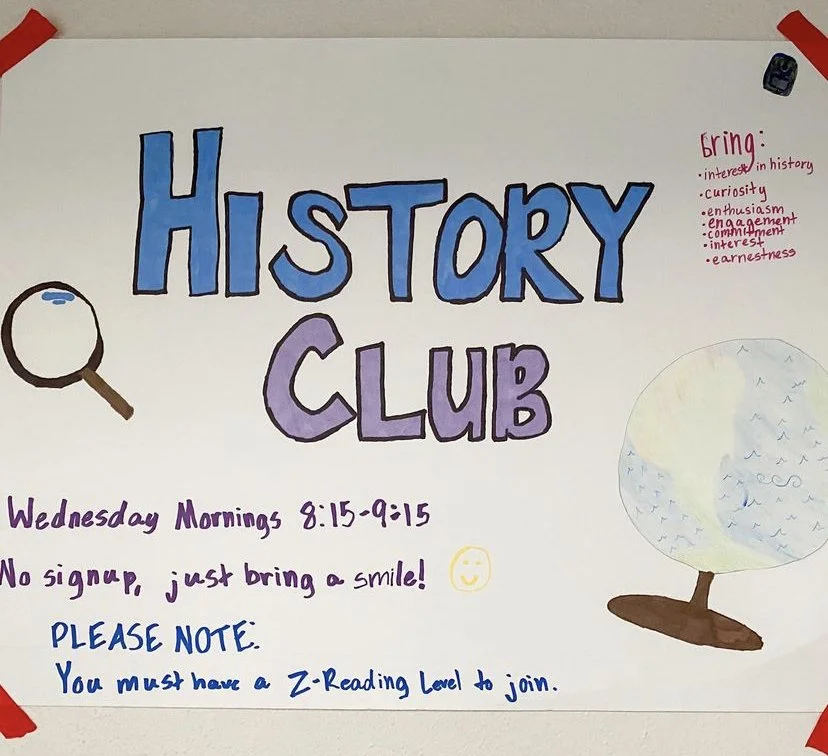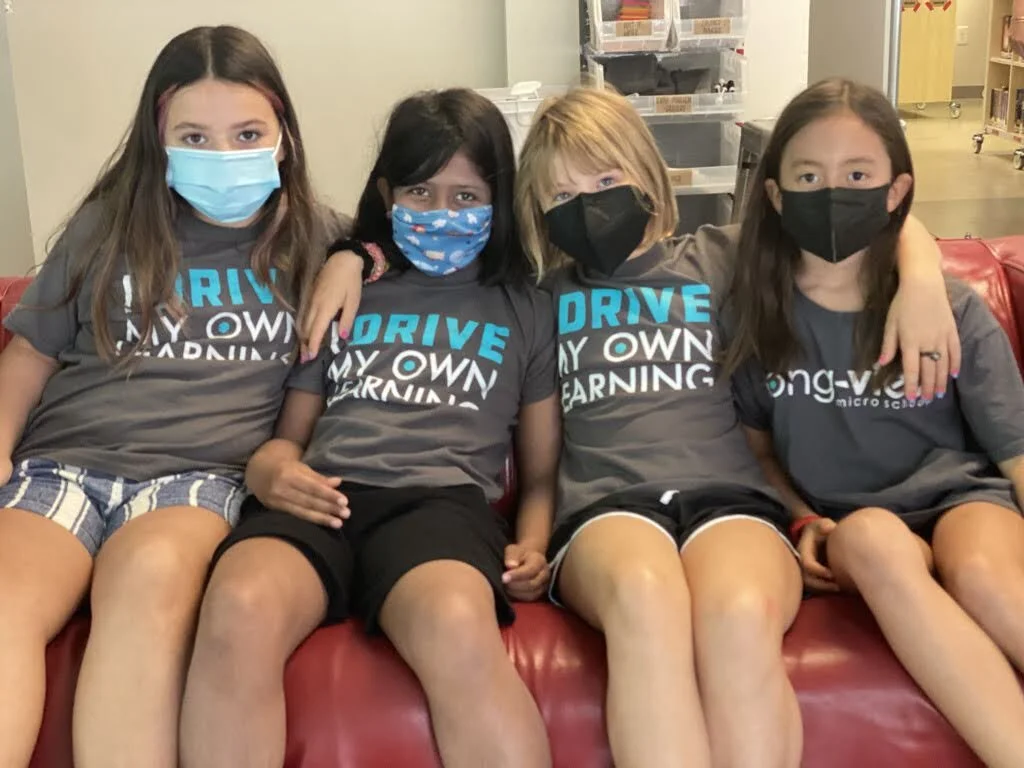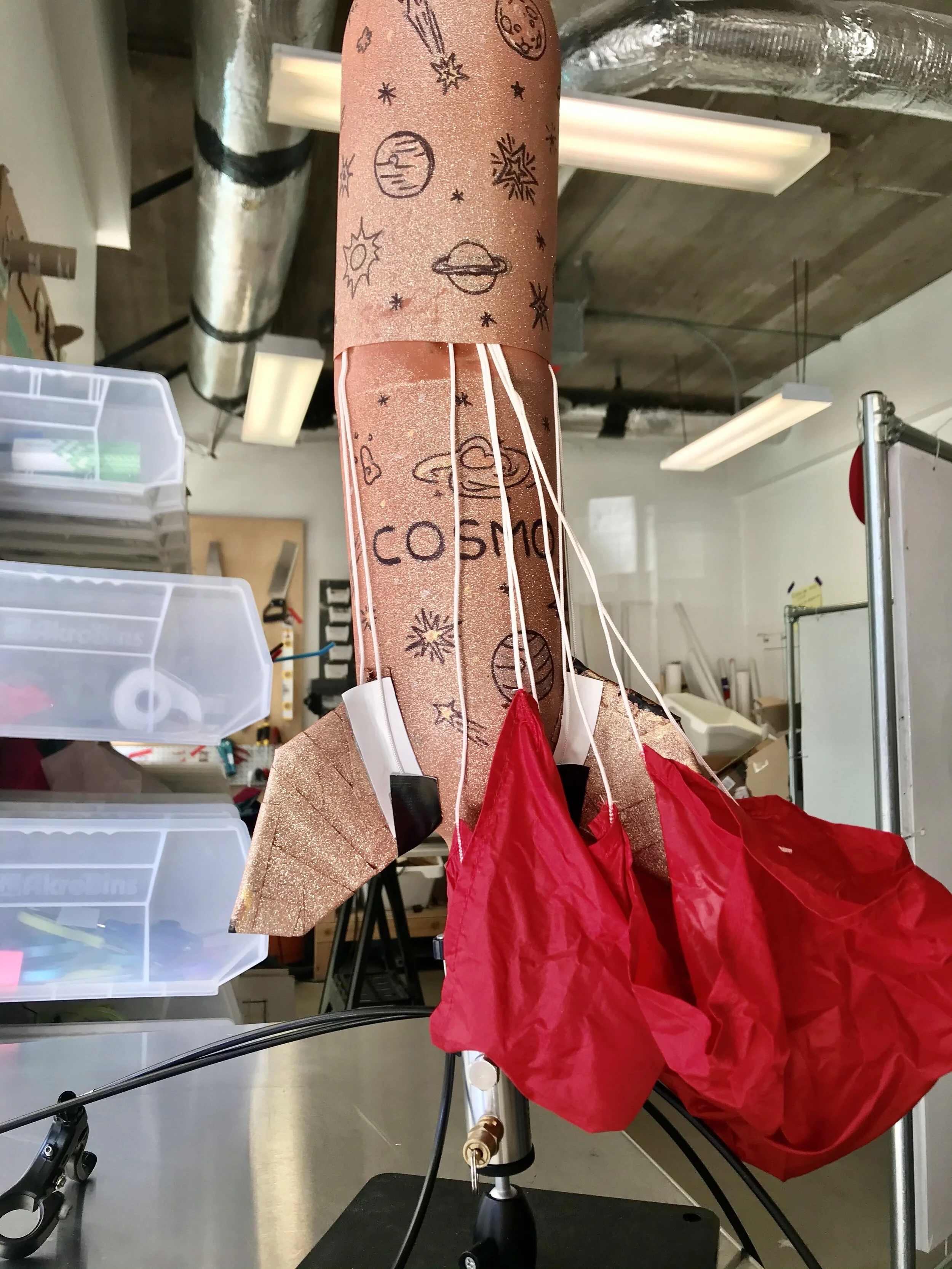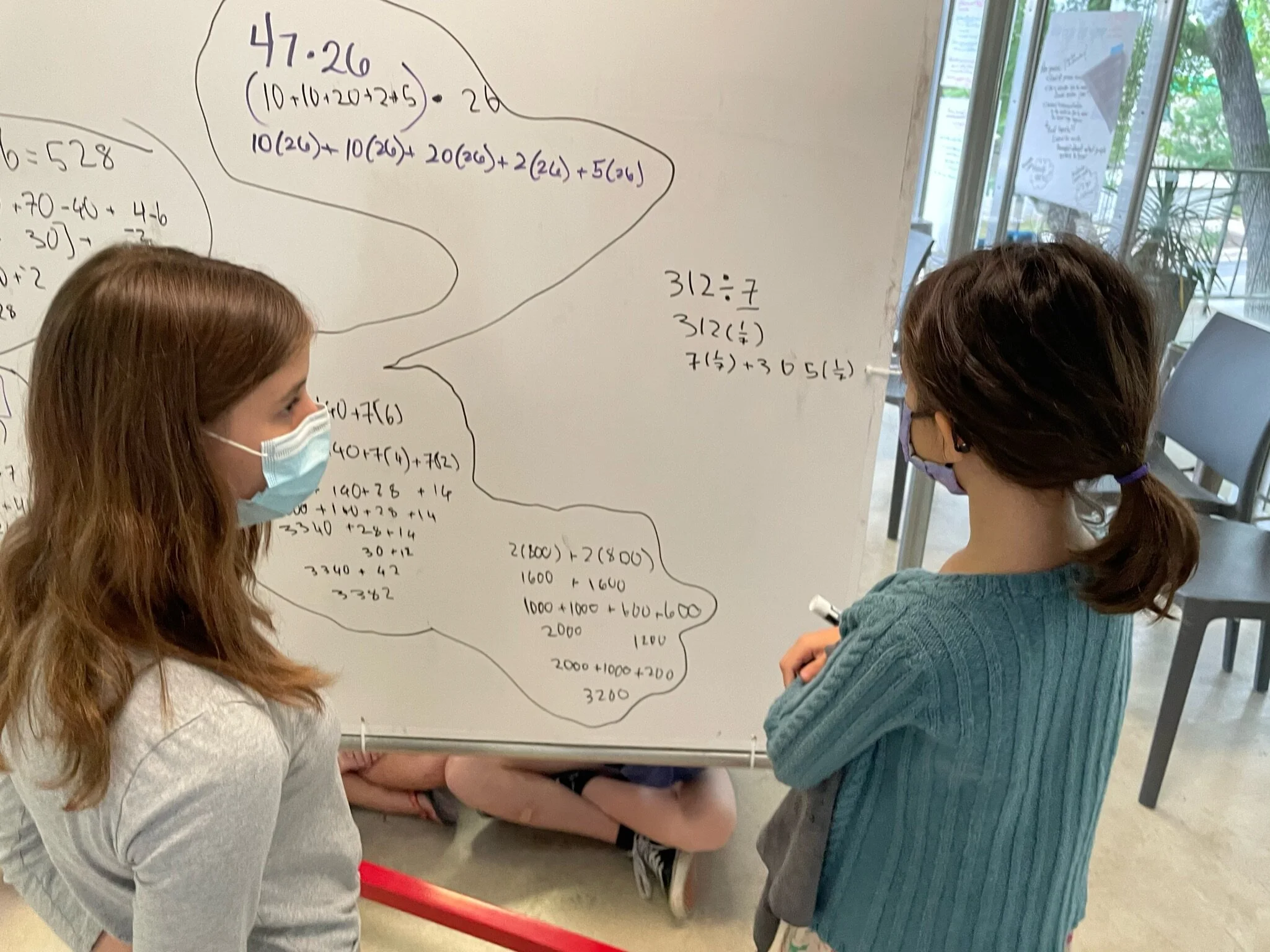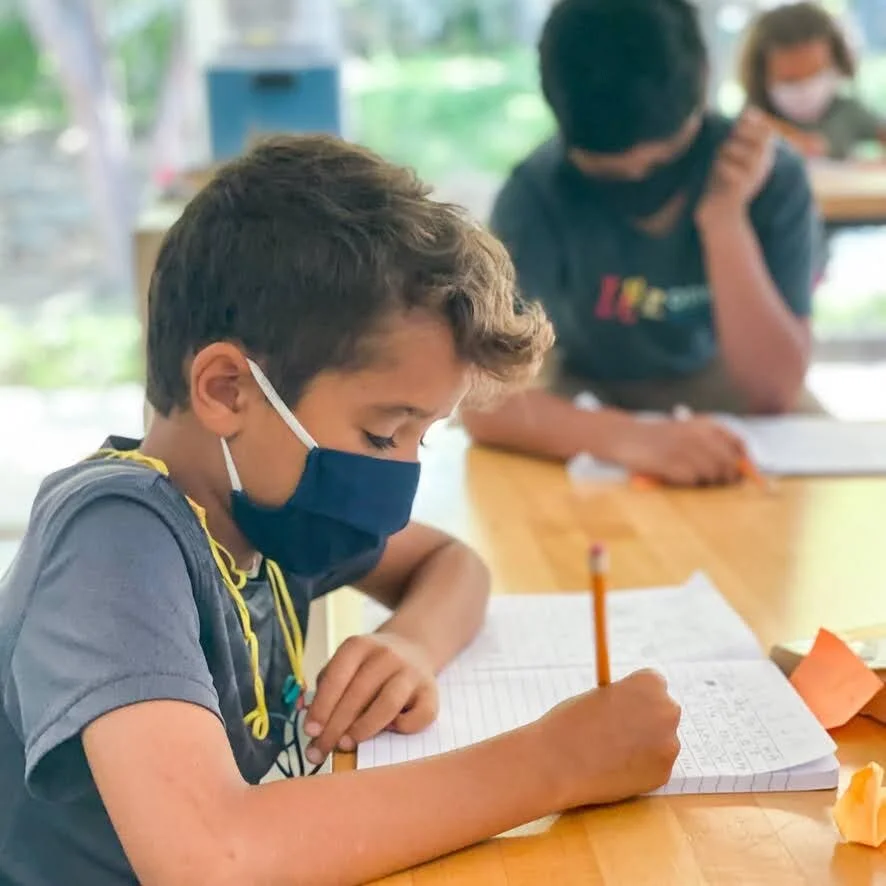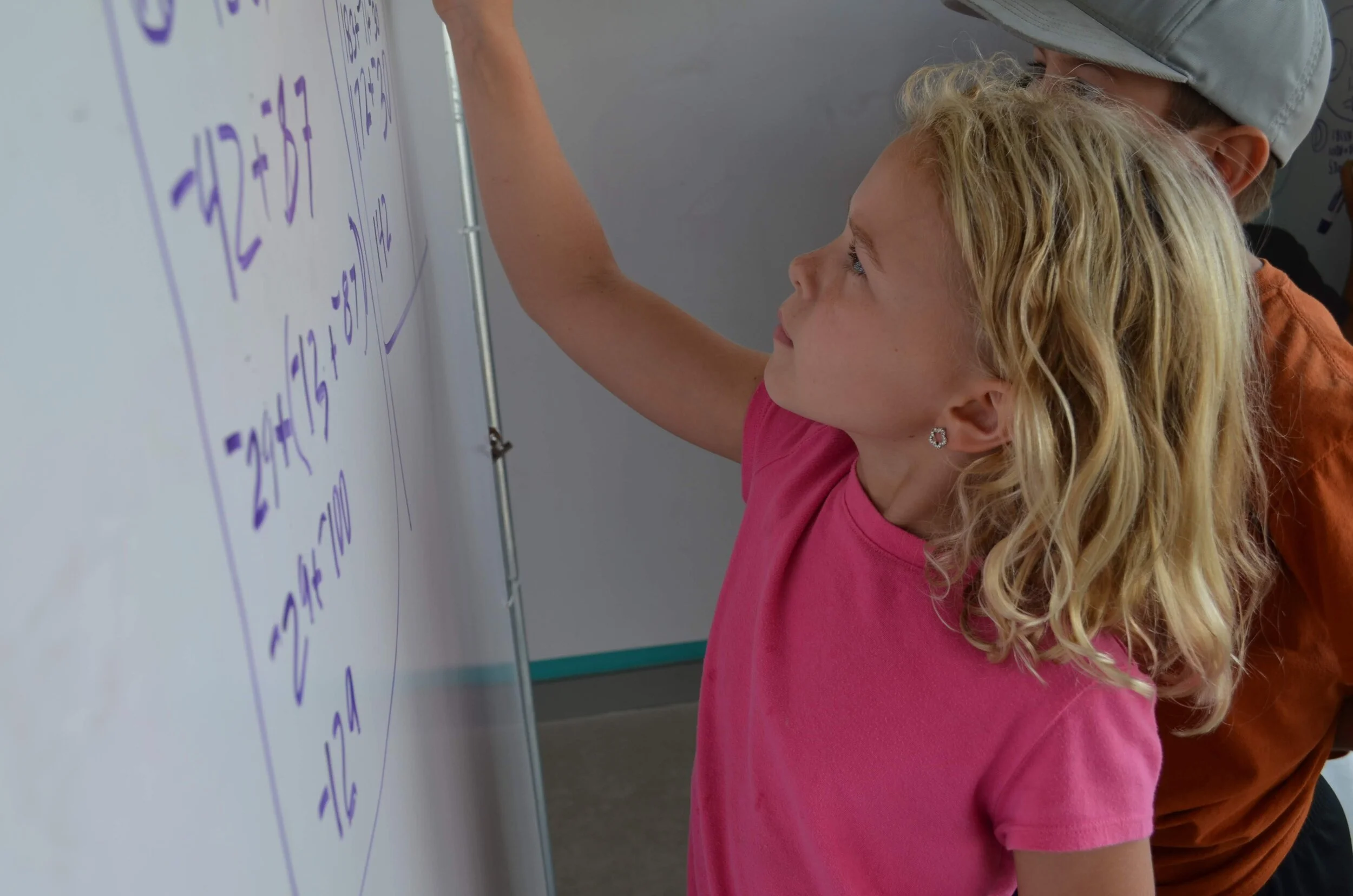“What’s the difference between ideology and belief?” Eva asks. It’s 8:30 on a Wednesday morning, and thirty learners have arrived at Long-View an hour before the start of their first block to engage in civic discourse about civics. Welcome to History Club. Invigorated by the return to in-person meetings this fall, the cohort of historically minded fourth through eighth graders has grown and elected to tackle some pretty complex subject matter: the evolution of political thought and government structures. During this meeting, the second of the year, learners examine an extensive list of governmental forms and consider the sources, ideologies, and organizing principles of political power….
Read MoreHere at Long-View, the members of the Literacy team tend to moonlight as librarians. Whether during the school year on Thursday afternoons, early in the morning, or during the summer months, we are constantly expanding, curating, organizing, and pondering the Long-View library collection. In recent years, Long-View has particularly committed itself to enriching the diversity of the books we offer our learners. While the push for more diverse books—especially for children and teenagers—has become a major initiative across the education and publishing worlds in the United States only relatively recently, it’s much more than a fashionable trend. And it’s much more than an empty gesture towards inclusivity….
Read MoreToday marked the beginning of the 2021-22 school year, and we are all excited to be back together! Typically the summer gives us all a chance to rest and ready ourselves for the year ahead, but this wasn’t exactly the case this summer. After all the changes that encompassed the 2020-21 school year due to the pandemic, we weren’t quite ready to go our separate ways at the end of May. Things were finally running more smoothly, and we were enjoying all being back in person together after many days of a mix of virtual and in-person learning. Still, summer came and we welcomed the warm weather, but when the calendar turned to August, we were thrilled to be back at school.
It’s Long-View’s 7th year, and we plan to make it the best ever….
Read MoreOne of the interesting things about Long-View Micro School is the financial model. Our financial model stands apart from the financial models of most independent schools in which tuition is set to cover about 90% of costs, and then funds are raised to manage the “gap.” In the typical independent school, dollars are raised from within the parent community through the annual fund and a gala or other social event. For the most part, it is expected that parents contribute to both of these events, and thus the true cost of attending the schools exceeds tuition. The annual fund and the gala occur during the fiscal year and thus there is significant pressure to raise funds from these events because the budget assumes these dollars will be procured. The dollars must come in lest the school end up in a difficult situation by Q3 or Q4.
At Long-View, we do not depend on fundraising to fund the gap between tuition and operating costs, and the gap is strategically tighter than in most schools….
Read MoreLong-View teachers value the progress in reading that can occur during summer months, and with that they spend significant time doing something that rarely happens at other schools: crafting individualized reading lists for each child. Rather than give everyone at a grade level the same list of required reading, our teachers work to build individualized lists for each reader. Today the first step of this process began when blank lists for every child were posted on the windows across the school. Every day for the next two weeks, all teachers will work to build out the lists, which will then be taken home by the kids on the last day of school….
Read MoreBuild Weeks are an important part of life at Long-View, but the parameters of Covid presented many complexities and for over a year we were not able to gather together as a full community or in teams that crossed bands. But last week the teachers came up with a plan to safely pull off a Build Week. As always, the dates and project challenge of the upcoming Build Week were kept secret, and the teachers carefully crafted a “reveal” last Monday so as to provide a level of authenticity to the Build Week challenge and to deeply invest the learners in the work for the week.
On Monday morning, the first day of the yet-to-be-revealed Build Week 11, Campfire started off in a slightly unusual way….
Read MoreWe use Pease Park daily and last week, the park's value reached new heights! Blue and Purple Bands tested learner-designed-and-built rockets, shooting the vessels high above Live Oak Meadow.
The rocket science unit began in January with both virtual Science Blocks and weekly in-person build workshops. During these build workshops the kids spread out in our parking lot, which served as our temporary, very-well-ventilated makerspace...or should we say, “The Long-View Jet Propulsion Research Facility”? The learners were studying astronomy and for their engineering project associated with this unit they learned about the physics of rockets….
Read MoreEvery fall our 8th graders begin their journey of looking at high schools. We hate to think of these amazing kids leaving us, but they are ready for the next step and always go off to rigorous high schools across Austin. Recently one of our 8th graders, Astrid, wrote a high school admissions essay that highlighted her experience as a math mentor in our program called “Big + Little Math.” Astrid gave us permission to share this essay with you once it had been turned in as part of her application process for a particular high school — Enjoy!
I never thought I would get to be a math teacher in seventh grade, but in late fall of 2019, I suddenly found myself standing at a whiteboard teaching a third grade student how to simplify fractions. This unexpected opportunity not only taught me more about myself as a leader and as a friend, but also ended up impacting the entire school….
Read MoreCurrently our teaching team is in the midst of one of the most reflective, collaborative, and important processes we undertake throughout the year: we are writing our learners’ “Artifact Portfolios.” We don’t give grades. We don’t issue a simple report card every six weeks. We don’t simply provide parents with general comments on their child’s progress. Instead, twice a year our teaching team works together to craft a lengthy narrative report on each child, which is captured in a portfolio-style layout that is positioned around “artifacts” of the child’s work. Artifacts are captured throughout the semester and take the form of photos, screenshots, excerpts of writing, short videos, and transcripts and most of the time are captured through the regular, every day work cycle, and not necessarily just through more high-stakes assessments or on-demand activities.
Remaining true to our learner-centered identity, the goal of the Artifact Portfolio is to report on the hard work of learning….
Read MoreOur Math Block is more of an experience than a class. It is rich and multi-dimensional. There are multiple goals at any one time, and the content isn’t explored in a strict linear trajectory. To us, the traditional math class pattern seems to be more about filling time and covering content than providing an experience that will transform thinking. In contrast, we think of the development of mathematics knowledge as multiple threads that must be braided together over time to create strong and lasting understanding. We pull on threads related to multiple concepts and ways of thinking, then bind them together. We aim for deep conceptual understanding, bearing in mind that the way learners understand an idea can have major implications for how, or whether, they understand other ideas. Thus, we are very purposeful in the way we build concepts, and we also work to emphasize the conceptual continuities among different number forms…
Read More
